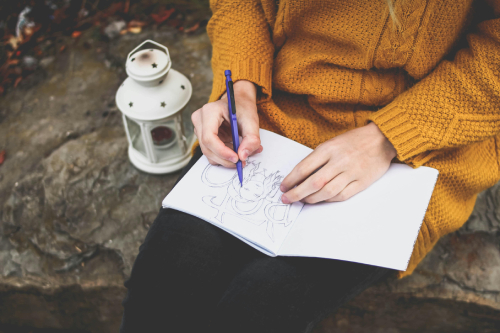In today’s fast-paced world, stress has become an almost ubiquitous part of our lives. Finding effective ways to manage and reduce stress is essential for maintaining overall well-being. One increasingly popular method is drawing, a form of art therapy that offers numerous therapeutic benefits. Research has shown that drawing can significantly alleviate stress and improve mental health in various ways.

Reducing Anxiety and Improving Mood
Drawing has been found to reduce anxiety and lift mood, even in those who do not consider themselves artists. Studies indicate that the act of creating art, including drawing, can lower levels of cortisol, a stress hormone. For instance, a study conducted by Drexel University revealed that 75% of participants experienced reduced cortisol levels after 45 minutes of art-making, regardless of their previous art experience. Participants reported feeling more relaxed and less anxious, suggesting that drawing can provide immediate relief from stress (Drexel University).
Enhancing Focus and Mindfulness
Engaging in drawing activities can also enhance focus and mindfulness. When individuals draw, they often enter a state of flow, where they are fully immersed in the activity, which helps distract them from stressors and promotes a sense of calm. This is particularly evident in activities like coloring mandalas, which require concentration and can induce a meditative state. Research has shown that coloring mandalas can significantly reduce anxiety levels, providing a structured yet creative outlet for stress relief (Verywell Mind).
Catharsis and Emotional Expression
Drawing can serve as a powerful tool for emotional expression and catharsis. For those dealing with trauma or high levels of stress, drawing can help externalize and process complex emotions. In a study by researchers at Texas A&M University and Emory University, participants with PTSD who drew mandalas showed a significant decrease in trauma symptoms compared to those who drew objects. This suggests that drawing can facilitate emotional healing by allowing individuals to express and work through their feelings in a safe and structured manner.
Versatility and Accessibility
One of the great advantages of drawing as a stress-relief tool is its versatility and accessibility. Unlike some therapeutic interventions that require specific skills or equipment, drawing can be done by anyone, anywhere, with minimal materials. Whether it’s doodling on a piece of paper, sketching a landscape, or coloring intricate patterns, drawing offers a flexible and accessible way for individuals to engage in creative expression and stress management.
Incorporating drawing into your routine can provide a myriad of mental health benefits, from reducing anxiety and improving mood to enhancing focus and facilitating emotional expression. As research continues to unveil the profound impact of art on mental well-being, drawing stands out as a simple yet effective strategy for managing stress. So, the next time you feel overwhelmed, consider picking up a pencil and letting your creativity flow.
Download StressBuddy
for Less Stress, Buddy
StressBuddy is free
